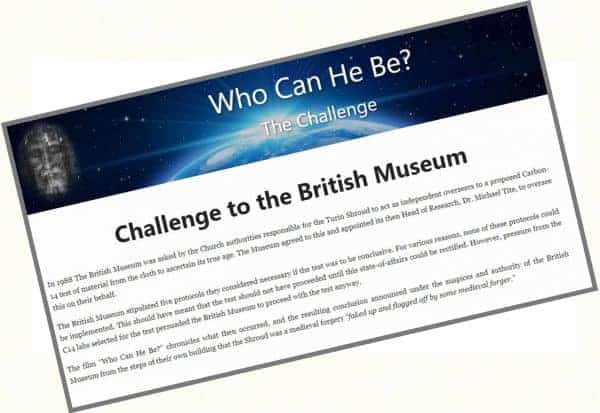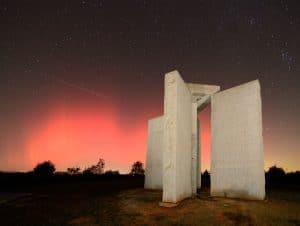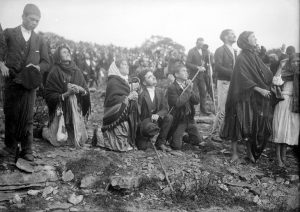When it comes to the debate about whether the shroud of Turin has been debunked, scholars disagree with each other. One part is convinced that the shroud is a forgery from the Middle Ages, while others believe it is really the burial cloth of Christ.
In April 2022, David Rolfe made the film “Who Can He Be” about the shroud of Turin. He is so confident of the shroud’s authenticity that he has launched a challenge. Any artist who can recreate the shroud will receive US$1,000,000.
The arguments for and against the shroud’s authenticity will be discussed in this article.
Is the shroud of Turin authentic?
In 1978, extensive research was performed on the Shroud of Turin. A group of scientists who called themselves Shroud of Turin Research Project (STuRP) were allowed to examine the shroud for 5 days. The only thing they were not allowed to do was a C14 examination because this required destroying a piece of material. This group concluded:
- the shroud came from the Jerusalem area
- it contains the image of a crucified and martyred man
- it could not have been painted.
Therefore, the shroud of Turin had to be authentic!
Below are some of their conclusions:
- The image contains both the front and back of a man. The cloth was folded over the head to cover the front of his body. This created two images. These two life-size figures are anatomically perfect, and of the same Body.
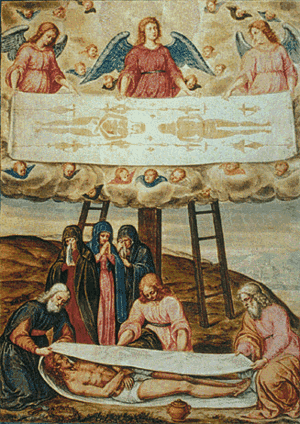
- The likeness is a negative image; what is light appears as dark on the print and vice versa. The first time this became clear was in 1898, when the photographer Secondo Pia took a photograph of the shroud and discovered that the print on the negative gave a realistic image. Photography was unknown in the Middle Ages or before. Therefore, an artist of that time could not have known about negative images and photography.

- The image bears resemblance to Christ as He appears in many works of art: a thin, bearded man with half-long hair. This suggests that artists of previous times were familiar with the shroud and based their paintings on it.
- The wounds on the back, chest and face are consistent with the description of Christ’s crucifixion. There are reddish bloodstains at the wrists, feet and on one side of the body where the spear pierced the body. There are more smaller bloodstains around the head, in line with wearing a crown of thorns.
- Blood is of the rare AB type+. Blood plasma around the bloodstains becomes visible under UV light.
- Blood particles also reveal high levels of creatine and ferritin. This is consistent with the body’s response to extreme trauma.
- Above the eyes are two round dark rings, these could be coins, often placed on the eyes of a deceased person. The Jesuit Father Francis Filas claimed that he could read the inscriptions on the coins and that they were from the time of Christ. Other researchers could not confirm this.
- Pollen corresponding to the known species around Jerusalem were found.
The image is visible only on the surface of the linen. It did not penetrate the fibers.

- The blood flows and anatomical details of the crucifixion match exactly how blood behaves after torture and crucifixion.
- The feet of the Man of the Shroud have stains of real dirt, travertine aragonite, a rare calcareous mineral that matches the spectral properties of this limestone substance found in caves near the Damascus Gate of Jerusalem. No other source is known.
- One of the peculiarities of the image of the Shroud is that it can only be seen at an optimal viewing distance of six to 15 meters. Closer or farther away the image fades. A painter cannot achieve this effect.
- Even the latest Bible versions tell us that Jesus was nailed in the “hands. But the image of the Shroud correctly shows us a medical truth: He was nailed through the “space of Destot” in the wrist, because a nail in the soft flesh of the hand could not support the weight of a man. The Greek word cheir can be translated as “hand,” “wrist,” or “forearm.
- A nail through Destot’s “space” in the wrist will damage the median nerve, causing the thumb to bend sharply in the palm. The man’s thumbs on the shroud were also invisible.

The Shroud of Turin Debunked
Just as there are scholars who are convinced that the canvas is authentic, there are others who think the shroud is a fake. They also have good arguments:
- Carbon dating (1988) shows that the linen dates from the Middle Ages. A piece of linen was carefully divided into three and dated by three separate institutions. According to C14 dating, all three institutions came to the same conclusion: the cloth dated from 1260-1390. Based on this conclusion, the shroud was not exhibited as a religious object anymore.
- The likeness is a negative image and can be recreated by simply making a bas-relief.
- The likeness of Christ is that of the thin, bearded man who appears in many religious works of art shows that the medieval artist used the accepted image of Christ when creating the canvas.
- Doubts about the authenticity of the canvas date back to the 14th century. These doubts are supported by a letter from Bishop Pierre d’Arcis to Clement VII, Pope of Avignon, in which d’Arcis stated that he knew the artist who made the shroud. This letter still exists:
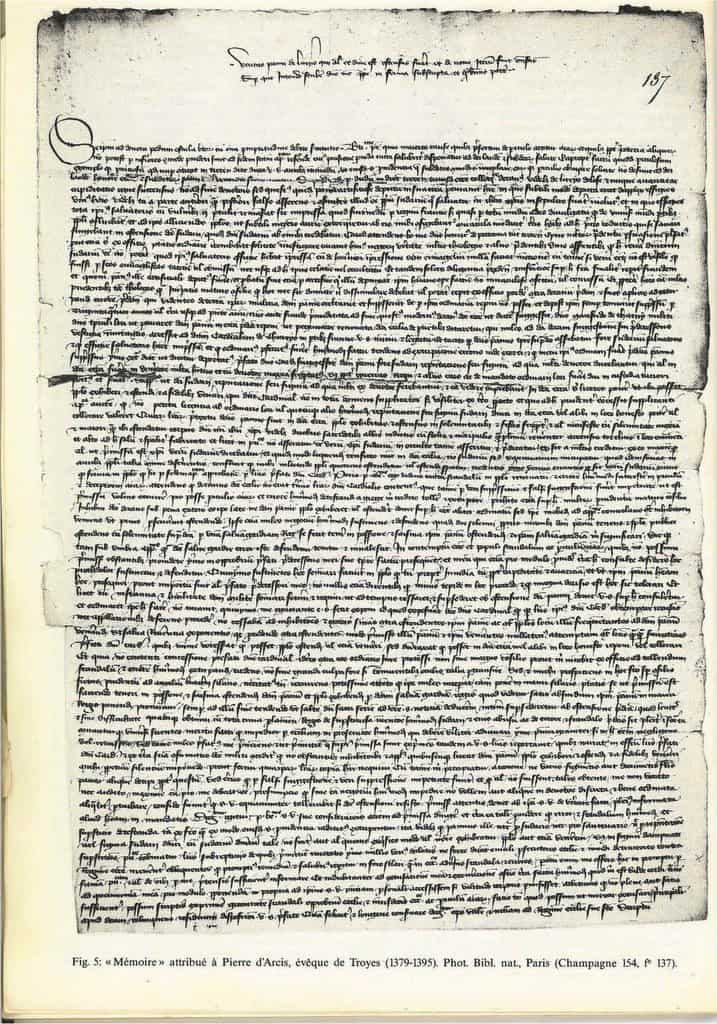
The pollen on the cloth can be explained by the fact that the cloth may have been in the Middle East before it was transported to Europe.
There is no mention in the Bible or early Christian writings of a large burial cloth or of an image formed at the time of the resurrection.
Bodies were not wrapped in linen in this way in the time of Christ, nor are there Biblical references to such a method. Several cloths are mentioned in John. The Bible says about this in John 20:5-7:
5 And when he stooped down, he saw the cloths lying; nevertheless he did not enter into them.
6 Simon Peter therefore came and followed him, and went into the tomb, and saw the cloths lying there.
7 And the sweatcloth which had been on his head he saw not lying with the cloths, but gathered together in another place.
- There is no historical evidence that the cloth is older than 1500.
Recent Research into the Shroud of Turin
- The 1988 carbon dating is questioned because a ” polluted” piece of linen was used. Old pictures show that in the Middle Ages the cloth was often held by hand when displayed. The cloth was repaired after a fire in 1352, and they may have used a piece of linen precisely from part for carbon dating.
- New research from 2015 by a team of scientists concluded that the shroud dates to the time of Christ, with a margin of error of 250 years.

Is the Shroud of Turin Real of Fake?
The more you read about this topic, the harder it is to take a stand. Phillip Ball, a former editor of the science journal Nature, wrote about this in 2019:
"Nothing published so far about the shroud offers compelling reason to think the 1988 study was substantially wrong - but apparently you can't draw definitive conclusions from it either."
Meanwhile, in-depth research has been done on the 1988 carbon dating. Joseph Marino discusses this at length in his book The 1988 C-14 Dating Of The Shroud Of Turin: A Stunning Exposé from 2020. You can see a brief summary of it here:

The Shroud of Turin Challenge
As I wrote in the introduction, in April 2022, David Rolfe wrote a contest. In his film Who Can He Be (trailer below), in which he states the 1988 research was wrong.
If you can reproduce the shroud, he will offer you a reward of 1 million dollars. The conditions for winning the prize can be found below:
If you would like a head start, read: Shroud of Turin, How was it made.
Should you participate and win the prize, please let us know….
We are also very curious whether the shroud is real or if it was faked in the Middle Ages.


